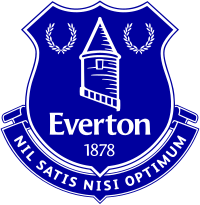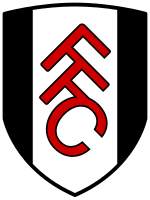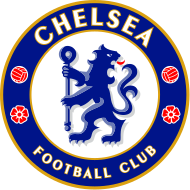Article body analysed
EPL Brighton & Hove Albion have five options at right-back, but they lack another specialist in the position as competition and cover for 33-year-old Joel Veltman. The experienced Dutchman is now the only established right-back in the squad, following Tariq Lamptey’s move to Fiorentina on the final day of the summer transfer window a week ago. Advertisement Lamptey’s departure to Italy is not a surprise, even though he agreed a one-year contract extension with Brighton in June. That deal helped them sell the 24-year-old English-born Ghana international in a package worth around £6million — double the amount they signed him from boyhood club Chelsea for in January 2020. Injury problems and concerns about his defending meant Lamptey averaged only 10 Premier League starts, out of a possible 38, in each of his five full seasons with Brighton after electric pace and adventure made him an eye-catching prospect in the early part of his career at the Amex Stadium. Veltman is canny and dependable. The defensive unit has a solid look to it when he’s playing. Only 23 league goals were conceded in the 19 games he started last season, an average of 1. 2 adversely skewed by that 7-0 trouncing away to Nottingham Forest in February. Without Veltman’s involvement from the start or off the bench, the average number of goals conceded per game jumped to 2. 0 (34 across 17 matches). Of course, that is not all just down to Veltman’s prowess, and there are reservations about how much longer he can continue to be effective as a top-flight right-back. He turns 34 in January, is not quick and does not have the energy levels to get up and down the pitch regularly. With his advancing years, he is also increasingly hampered by injuries — he made his first league start since February in the 2-1 comeback win against Manchester City last weekend. Mats Wieffer missed that match with a minor knee issue. Veltman’s countryman was described by Brighton’s technical director David Weir as “one of the best deep-lying midfielders in Europe” when he was signed 14 months ago from Feyenoord for around £25million, so why has he been playing at right-back since late last season? Advertisement The first two matches this season provided contrasting evidence as to whether Wieffer, after a difficult debut campaign with Brighton, is getting to grips with a position that was alien to him in his native Netherlands. He was impressive against Fulham on the opening weekend: marking Alex Iwobi, he made more tackles (five) than any other player in that 1-1 draw, won possession the joint-second-most times (six), competed in the most duels (15) and won the joint-most duels (nine). It was a different story away to Everton a week later, up against Jack Grealish. The loan signing from Manchester City contributed assists for both goals in Brighton’s 2-0 defeat, and Wieffer was also booked in the first half for a foul on him. It was not supposed to be this way. Wieffer was bought to strengthen Brighton in the centre of the pitch following the summer 2023 sales of Moises Caicedo to Chelsea and Alexis Mac Allister to Liverpool. In his final season at Feyenoord, under now-Liverpool manager Arne Slot, he made all 42 of his appearances as either the No 6 or as a box-to-box midfielder. Last October, Wieffer was guilty of the type of error that can define a player’s career at a club unless improved performances dim the memory. He passed the ball to opponent Tommy Doyle when the Wolves midfielder was outnumbered four to one in second-half stoppage time. Doyle then released Matheus Cunha, who scored to turn what should have been a 3-1 defeat at the Amex into a 2-2 draw. Slowly but surely, Wieffer has won over sceptics in the fanbase, albeit not in a way he or they would have imagined. Head coach Fabian Hurzeler used him at right-back for six matches in succession at the end of last season, when Veltman and Lamptey were both out. Wieffer contributed three assists in four Brighton wins across those games, a strong finish which almost yielded European qualification as Brighton finished eighth. Advertisement He is continuing in the role this season, partly because of the competition for places in midfield led by Carlos Baleba and partly because Hurzeler regards him as a viable right-back option. “For sure, we signed him as a central midfielder, but I think he’s a very good full-back and, of course, I have ongoing talks with him about the position, ” Hurzeler said when asked by The Athletic about Wieffer during his media briefing before that Everton game. “At the beginning, I didn’t have the feeling that he’s that comfortable playing in this position but in the end, I think every player wants to be on the pitch and, no matter in which position, you want to play for your club. “So, in the last (few) weeks I saw progress. I saw a change in his thinking, how he behaves on the pitch, how he identifies himself with this role, and I think it’s very important that he commits to this position. Also, for the future, it only helps him. First of all, (he gets) a lot of game time, because at the moment he’s one of our top players. He plays really well as a right full-back. Secondly, it helps him to be more flexible, so for his future career it’s not bad that he can play as a right-back and (as) a central midfielder. “I try to give him these arguments. At the beginning, it was more about convincing him that it’s a good role for him. Now I feel his commitment to this role to help the team. ” Some aspects of playing right-back suit Wieffer’s combative instincts. He ranked highly in the Dutch Eredivisie in 2023-24 for blocks, interceptions, ball recoveries and tackles, but there are challenges involved as well that he is still grappling with. “The benefits are that a central midfielder is always a player who really understands the game, and right full-backs, for me, are like playmakers, ” Hurzeler said. “They are not only in wide areas, they’re also inverted in some moments. When you play as a central midfielder you are familiar in these areas, and we see that with Mats. “The big change is, as a No 6, you always know you have a player behind you, with the centre-back, so it’s really covering the depth and that’s something we work on with our full-backs, that they have the right position, the right timing, when to drop, when to squeeze. These are all things where the central midfielder playing as a right full-back needs to adapt. You have more one-against-one situations. “So there are some changes but, overall, Mats is a very physical player, (and) if you’re a physical player who understands the game, I think that a right full-back or full-back position is a really good position for him. ” What of the other right-back candidates in the squad? Advertisement The versatile Ferdi Kadioglu is only just back in contention after a toe injury which required surgery and ruled the Turkey international out from November onwards last season. The 25-year-old can operate on either side of the defence, but is better known as a left-back. Jack Hinshelwood, in common with Wieffer, is essentially a midfielder. Academy graduate Charlie Tasker is a bright prospect. The 19-year-old replaced Veltman in the 77th minute of last month’s 6-0 win at Championship side Oxford United in the Carabao Cup’s second round and is likely to be in the squad again for the third-round visit to League One outfit Barnsley on September 23, but he is a considerable distance from being a candidate to start in the Premier League. With Veltman and Wieffer, backed up by Kadioglu and Hinshelwood, Brighton are well-stocked at right-back in the short term, but it is a position that will need addressing in the future. (Top photos of Veltman, left, and Wieffer: Getty Images) Spot the pattern. Connect the terms Find the hidden link between sports terms Play today's puzzle Andy Naylor worked for 32. 5 years on the sports desk of The Argus, Brighton’s daily newspaper. For the last 25 of those years he was chief sports reporter, primarily responsible for coverage of Brighton and Hove Albion FC. Follow Andy on Twitter @Andy Naylor BHAFC


